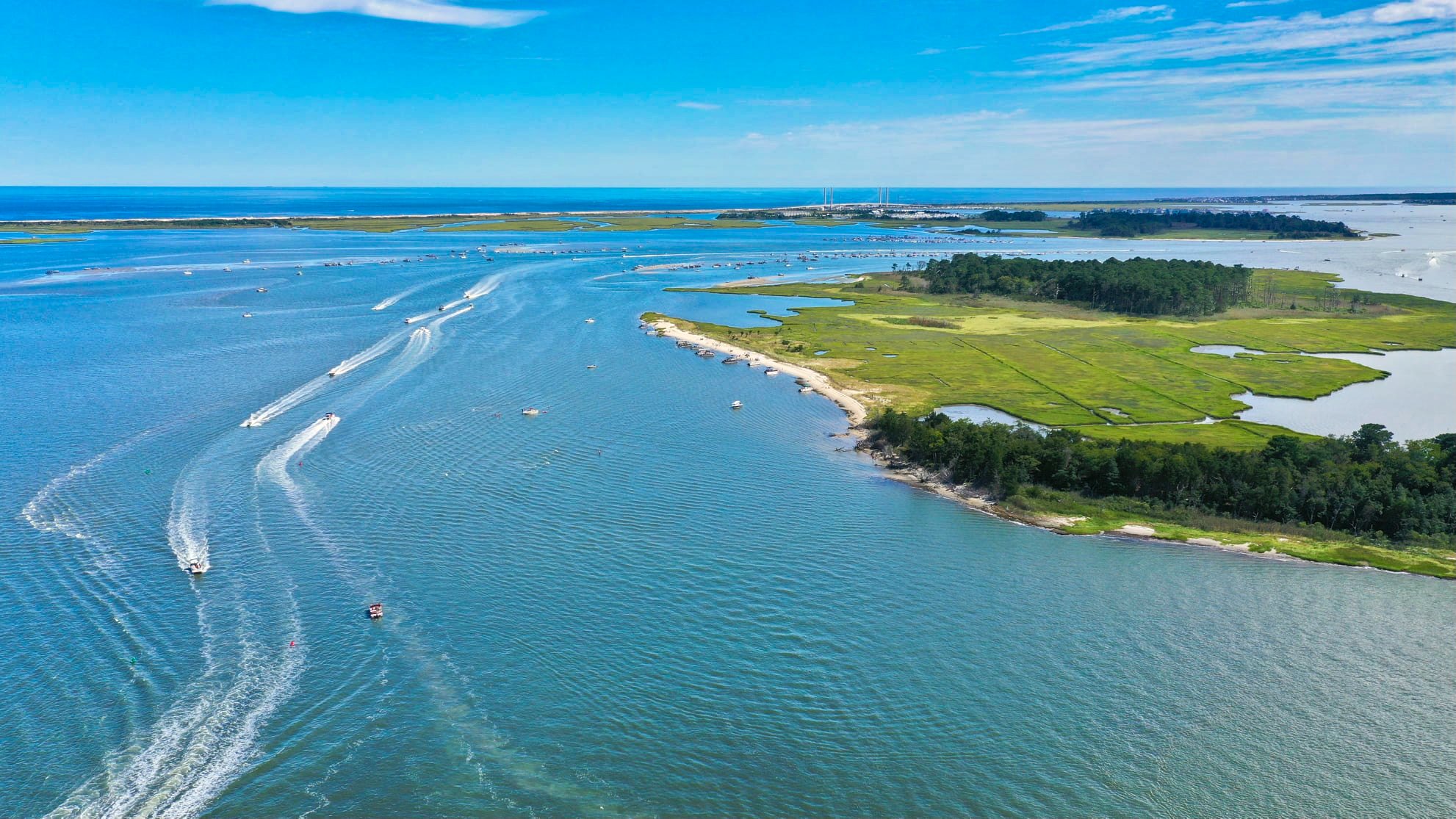Delaware’s Inland Bays Contribute $4.5 Billion to Local Economy Each Year
New Economic Valuation Report from CIB and Sea Grant Shows Bays Support Construction, Tourism, Fisheries Businesses Accounting for 35,000 Jobs
The Delaware Center for the Inland Bays (CIB) and the Delaware Sea Grant College Program have completed a first-ever assessment of the Economic Value of the Delaware Inland Bays, which reports that the Inland Bays generate over $4.5 billion in annual economic activity and support over 35,000 jobs. A key finding of the study is that the economic contributions are felt locally - 89 percent of the economic activity and 94 percent of the jobs occur in Sussex County.
The report was authored by Christian Hauser of Delaware Sea Grant and Christopher Bason of CIB. Key-Log Economics, an independent ecological and economic research firm based in Charlottesville, Va., performed the data analysis. Key-Log helps focus ecological and economic information on land use issues and ecosystem management.
According to report author Christian Hauser, the report provides important information to the public, resource managers, and policy makers. “Delaware Sea Grant is committed to helping Delaware’s coastal stakeholders make informed decisions about resource management. This report demonstrates the importance of the Inland Bays as the base of a sustainable and resilient coastal economy in Delaware.”
The report also provides insight as to the economic growth of this region and how it has been developed to a housing hub and tourism destination. The Wall Street Journal recently declared that Sussex County is one of the best places to retire in America, due to its “mix of farmland and quaint beach towns, (and is known for) saltwater bays and for its sights and serenity.” This influx of new residents has driven development and construction, which, according to the report, contributes almost a quarter of a billion dollars ($675 million) to the Inland Bays economy each year. From 2017 through 2020, the number of new subdivision lots proposed in Sussex County averaged over 4,300 per year and over 10,000 building permits were issued each year during the same four-year period.
However, the report also notes that population growth and associated development can have drawbacks, and if poorly planned, can adversely affect the natural resources that attract people to this region in the first place.
Anna Fagan, Acting Executive Director of the CIB, said of the rapid growth around the Inland Bays in Sussex County: “Now is an absolutely critical time to ensure that sound environmental policies and investments in open space protect the Inland Bays from the impacts of development.
“The Center is committed to working with our elected officials and the development community to support open space protection efforts commensurate with the level of development that is happening,” said Fagan. “In the end, caring for our waterways has benefits the environment, homeowners and developers. It is why people come here in the first place,” she said.
The report also documented that investments in water quality improvement projects can increase the value of the Inland Bays economy. Property values and the value of outdoor recreation were forecasted to increase significantly.
Based on these results, report author Chris Bason noted that the study supports renewed focus on achieving the water quality goals of the Inland Bays Pollution Control Strategy. “Water quality remains poor in many areas of the Bays,” he said. “We share an amazing economic asset here and we need to take care of it by investing more in pollution control through the protection of forests and wetlands.”
The study specifically found that the effects of improved water quality on real estate and outdoor recreation alone, which total approximately $11.2 million per year, will pay for almost 50% of the estimated annual cost to implement the Inland Bays Pollution Control Strategy.
“This study demonstrates that funding implementation of the Pollution Control Strategy is a small investment relative to the overall economic value of our inland bays,” said Bason.
The importance of the Inland Bays to Sussex and Delaware and the need to protect and restore these critical waterbodies is recognized by many.
“The Inland Bays are one of Sussex County’s truest ecological and economic gems, home to countless species of fish and wildlife, and a draw to hundreds of thousands of visitors who invest hundreds of millions ($218 million according to the report) in the Inland Bays region annually,” Sussex County Council President Michael H. Vincent said.
“The bays and their tributaries are quite literally the lifeblood coursing through our coastal region and its local economy,” said Vincent, “supporting jobs, recreation, and a community’s collective way of life. That’s why it’s imperative that we work together – government, advocates, the private sector, and everyday citizens – to do what we can to protect this valuable resource and ensure its beauty and bounty for generations to come.”
U.S. Senator Tom Carper (D-Del.), Chair of the Environment and Public Works Committee, has long supported Delaware’s waterways and the state and national programs that support them. Senator Carper helped author the bipartisan Water Resources Development Act that recently passed the Senate and now goes to the full Congress. This legislation will help Delaware’s communities - large and small - maintain their waterways and coastal resiliency. He also championed the climate provisions in the Inflation Reduction Act, signed into law by President Biden in August.
“Delaware is a coastal state with many beautiful waterways and habitats, driving tourism and our economy,” said Senator Carper. “We must continue to protect these precious resources for many generations to come through smart planning and common-sense public policy that help combat pollution and climate change.”
Here are some of the other highlights of the economic reporting:
Economic activity within the Inland Bays study region provides tax revenue to federal, state, and county governments estimated at $458 million.
The Bays’ thriving marina and boating economy contributes $76 million in activity
Accommodations, including at least 13 privately operated RV and tent campgrounds near the Inland Bays, contribute $144 million in activity and over 1,000 jobs.
The study cites research indicating that in 2019, 7.5 million visitors came to Sussex County and that tourism is now the fourth largest employer in the state.
The Delaware Inland Bays consist of three interconnected coastal lagoons in southeastern Sussex County: Indian River Bay, Little Assawoman Bay, and Rehoboth Bay. Collectively, the Bays and their tidal tributaries cover 32 square miles with a watershed of approximately 320 square miles.
To read the full assessment, visit the Additional Resources section on our Resources page.

